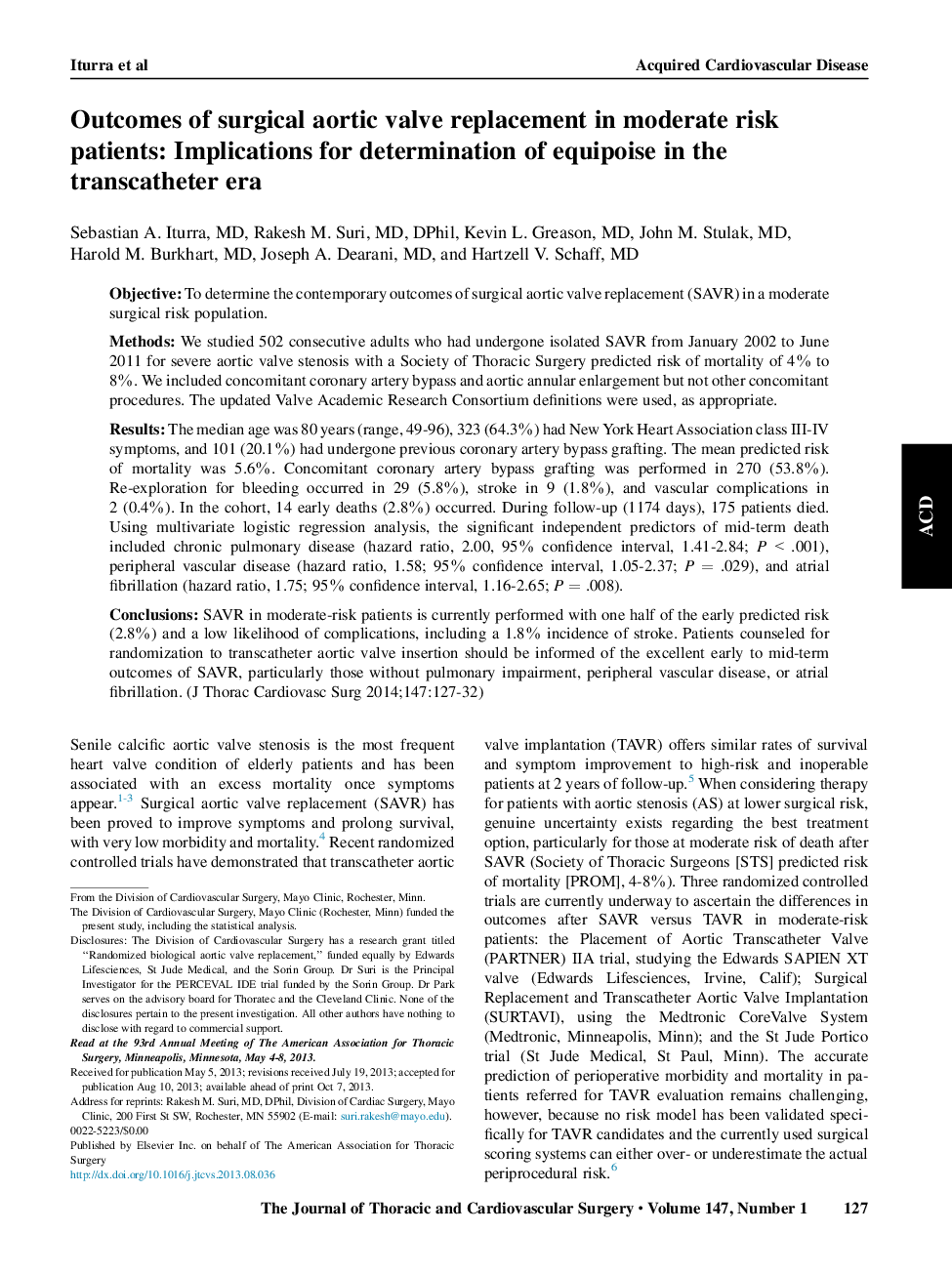| کد مقاله | کد نشریه | سال انتشار | مقاله انگلیسی | نسخه تمام متن |
|---|---|---|---|---|
| 2980569 | 1578615 | 2014 | 6 صفحه PDF | دانلود رایگان |
ObjectiveTo determine the contemporary outcomes of surgical aortic valve replacement (SAVR) in a moderate surgical risk population.MethodsWe studied 502 consecutive adults who had undergone isolated SAVR from January 2002 to June 2011 for severe aortic valve stenosis with a Society of Thoracic Surgery predicted risk of mortality of 4% to 8%. We included concomitant coronary artery bypass and aortic annular enlargement but not other concomitant procedures. The updated Valve Academic Research Consortium definitions were used, as appropriate.ResultsThe median age was 80 years (range, 49-96), 323 (64.3%) had New York Heart Association class III-IV symptoms, and 101 (20.1%) had undergone previous coronary artery bypass grafting. The mean predicted risk of mortality was 5.6%. Concomitant coronary artery bypass grafting was performed in 270 (53.8%). Re-exploration for bleeding occurred in 29 (5.8%), stroke in 9 (1.8%), and vascular complications in 2 (0.4%). In the cohort, 14 early deaths (2.8%) occurred. During follow-up (1174 days), 175 patients died. Using multivariate logistic regression analysis, the significant independent predictors of mid-term death included chronic pulmonary disease (hazard ratio, 2.00, 95% confidence interval, 1.41-2.84; P < .001), peripheral vascular disease (hazard ratio, 1.58; 95% confidence interval, 1.05-2.37; P = .029), and atrial fibrillation (hazard ratio, 1.75; 95% confidence interval, 1.16-2.65; P = .008).ConclusionsSAVR in moderate-risk patients is currently performed with one half of the early predicted risk (2.8%) and a low likelihood of complications, including a 1.8% incidence of stroke. Patients counseled for randomization to transcatheter aortic valve insertion should be informed of the excellent early to mid-term outcomes of SAVR, particularly those without pulmonary impairment, peripheral vascular disease, or atrial fibrillation.
Journal: The Journal of Thoracic and Cardiovascular Surgery - Volume 147, Issue 1, January 2014, Pages 127–132
